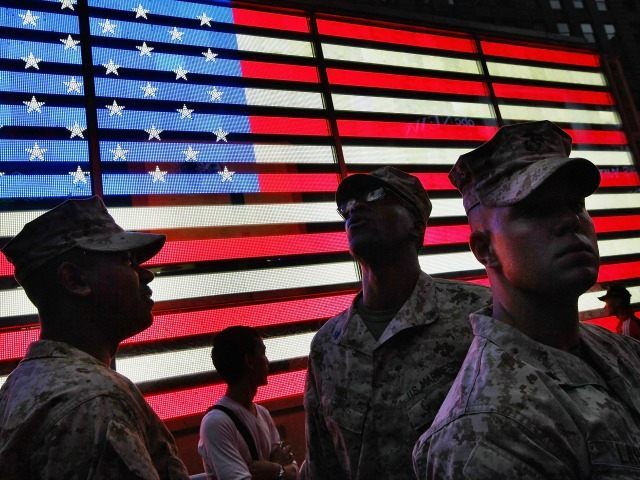WASHINGTON, D.C. — The Marine Corps, under current funding levels, is expected to face “increasingly significant challenges” to the readiness necessary to deter aggression and win America’s battles, high-ranking military officials told lawmakers.
While the Marine Corps lieutenant generals noted that “the most dire readiness situation lies within our Aviation element,” they also conceded that the service branch is facing a shortfall in inventory of operationally available amphibious ships, a critical component of the service branch.
“Amphibious platforms provide the sovereignty, strategic mobility, unmatched logistical support, operational reach, and forcible entry capability required to deter and, when necessary, defeat our Nation’s adversaries,” they told a House panel Wednesday. “Our amphibious concepts have been validated throughout our history, and we will remain a conduit for innovation.”
Amphibious warships remain the preferred method of deploying the Marines into battle.
“The availability of amphibious shipping remains paramount to our relevancy, responsiveness, resiliency and readiness. The Nation’s amphibious warship requirement remains at 38,” the generals wrote in joint testimony. “The current inventory of 31 vessels falls well short of this requirement. Maintenance challenges in the aging amphibious fleet significantly exacerbate that shortfall.”
According to the lieutenant generals who are in charge of the various pillars of the Marine Corps, the lethal capabilities of some potential adversaries have already exceeded America’s as a result of “deferred modernization” efforts.
“As we engage in the current fight and maintain our forward presence in order to respond to crises, our enemies and potential adversaries have not stood idle. They have developed new capabilities which now equal, or in some cases exceed, our own,” the Marines told the House Armed Services Subcommittee on Readiness.
The generals did not explicitly name any of the potential enemies.
“Over 15 years of conflict in Afghanistan and Iraq, we have focused investment and resources on ensuring Marines were prepared for the current fight,” they stated, adding:
During that time, those conflicts consumed much of the life for many of our legacy equipment systems while modernization was necessarily delayed. A focus on those operations, the decrease in funding levels, fiscal instability, and the lack of an operational reprieve have left your Marine Corps in a state that is not optimized for the future.
Marine Corps Lt. Gens. Ronald Bailey, Jon Davis, and Michael Dana authored the joint remarks prepared for the House panel hearing. Bailey is the deputy commandant for plans, policies, and operations; Davis for aviation; and Dana for installations and logistics.
Referring to the Marine Corps aviation readiness issues, the generals told the congressmen:
An unhealthy percentage of our aviation units lack the minimum number of ready basic aircraft (RBA) for training, and we are significantly short ready aircraft for wartime requirements. We simply do not have the available aircraft to meet our squadrons’ requirements. This means that flight hour averages per crew per month are below the minimum standards required to achieve and maintain adequate training and readiness levels.
“Ground equipment readiness is in a better situation than aviation but there are still significant challenges,” the Marines testified, adding, “At our current end strength, coupled with the current operational tempo, the impacts to our force are not sustainable.”
The U.S. Marines active force has shrunk from 202,000 to 182,000.
“While today’s force is capable and our forward deployed forces are ready to fight, we are fiscally stretched to maintain readiness across the breadth of the force in the near term, and to modernize for future readiness against threats we will face,” the generals said. “The Marine Corps will require sufficient resources to remedy this situation.”
“Investing in and accelerating our modernization programs directly contribute to improved readiness by achieving efficiencies and providing needed capabilities sooner,” they added.

COMMENTS
Please let us know if you're having issues with commenting.